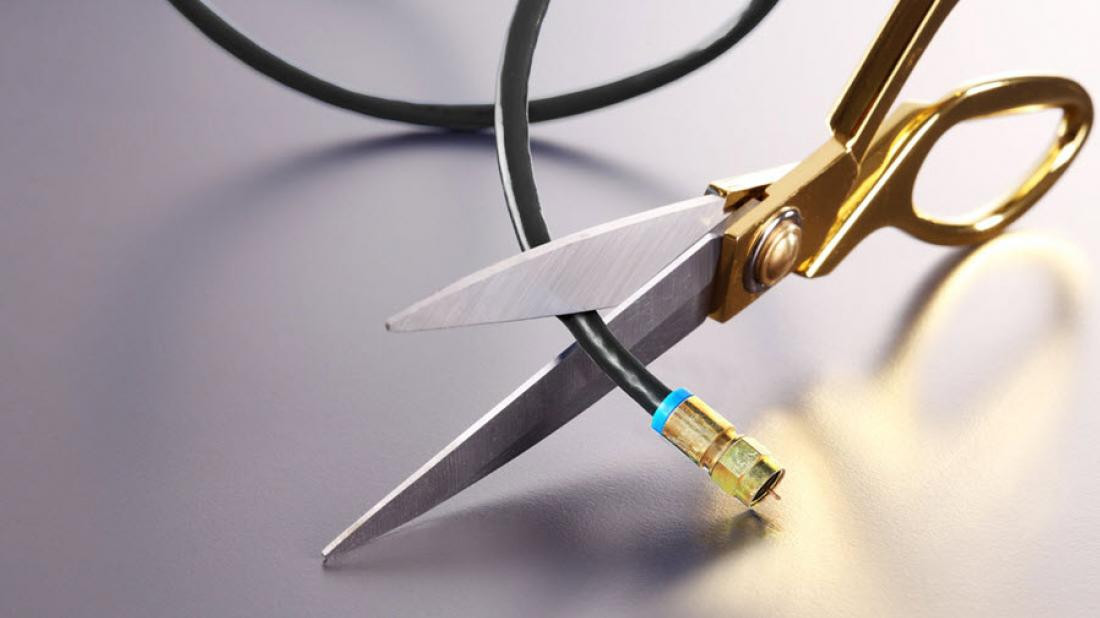Cord-Cutting Makes a Comeback
After a brief respite during the pandemic, cable’s video losses climb

Cable video customer losses, which improved over the past few quarters during the pandemic, are back on the rise, according to a Moody’s Investor Service report.
While broadband subscriber growth exploded during the pandemic, lesser known was the impact stay-at-home orders had on pay TV video customer rolls. During Q3 2021, video losses tempered enough to cause a handful of analysts to rethink their forecasts. Wells Fargo Securities media analyst Steven Cahall modified his 2025 prediction for total pay TV video losses from 4.7 million to 4.3 million; MoffettNathanson senior analyst Craig Moffett expected cable video losses to spike to 2.4 million in 2021, falling to 1.98 million by 2025.
In his most recent report, Moody’s senior VP Jason Cuomo noted that the Video Replacement Rate (VRR) for the sector, a measure of the pace at which broadband is replacing traditional video subscriptions, fell to 1.5 times in 2021 from 2.21 times in the prior year. While that seems like a big improvement for video, it was more a factor of dramatically slower broadband growth. According to Cuomo’s report, broadband additions in Q4 slowed to 4.1% from 4.2% in Q3, while pay TV subscriber losses rose to 6.4% from 6.2% for the year.
In his report, Cuomo concluded that the temporary benefits from the pandemic are beginning to disappear and, coupled with newer subscribers taking only high-speed Internet services, should drive video’s decline higher as broadband additions even out.
“Video losses will continue to be driven by weak attachment rates to broadband subscriptions among younger consumers, and a loss of existing subscribers because of ongoing cord-cutting by those switching to video streaming,” Cuomo wrote. “Rising penetration rates in residential and commercial markets, and gains from expansion of the footprint (new builds, overbuilds, and edge-outs) will continue to support broadband growth.”
While the two largest cable operators — Comcast and Charter Communications — had relatively strong increases in broadband subscribers (4.3% and 4.2%, respectively), their video losses varied widely. According to Moody’s, Comcast’s average video loss rate was -8.4%, while Charter’s was -2.4%. Comcast and Charter account for about 83% of cable video customers.
According to Moody’s, only three cable companies increased their VRRs in the period — Cable One (from 36.4 times to 85.1 times), Breezeline parent Cogeco Communications (from 7.5 times to 8.1 times) and WideOpenWest (from 0.7 times to 1.1 times). Charter had the biggest drop (from 54.7 times to 45.6 times) followed by Block Communications (from 1.8 to 1.4) and Comcast (from 1.3 to 1.1).
Get the TV Tech Newsletter
The professional video industry's #1 source for news, trends and product and tech information. Sign up below.
Revenue growth for the sector in Q4 was 4%, down from 7.2% in Q3 and 6.1% for the same period in the prior year. Cash flow growth fell to 5.9% in Q4, down from 9.6% in Q3 and 7.7% in Q4 2020. That, Cuomo wrote, was directionally consistent with the VRR trends.
“We believe the slower growth is at least partially attributable to a difficult comparison to 2020 given the temporary benefit of the pandemic, which peaked during this time,” Cuomo wrote. “Growth, while at a lower level, is supported by the continued shift to lower-priced, higher-margin broadband (from higher-priced, but much lower-margin video).”
Broadband, he continued, accounted for about 54% of the total subscriber mix in Q4, and was nearly 2 times video subscribers in the period, up 20% from 1.7 times at the end of 2020.
